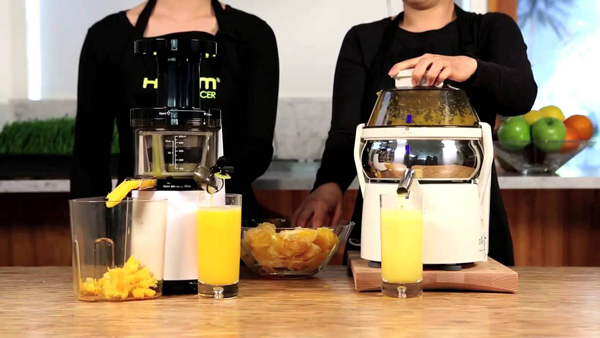15
Oct

The vitamins, fiber, minerals and antioxidants found in fruits and vegetables are essential for a healthy body. However, getting kids and even adults to eat fresh produce may take a great effort. In that case, a flavourful drink may be the better option for them. Since store-bought juices are quite limited and dull, and loaded with sugar and preservatives, you can buy juicer to create your own homemade juice with fruits and vegetables of your choice.
It is important to mention that not all juicers are created equal. They can differ in the way they process fruits and vegetables, and each of them has pros and cons. So, before you hit the store or browse online to buy juicer, take a moment to understand the different types and learn which one will better suit your needs.
Centrifugal juicers use blades that rotate at high speed and shred produce. The blades are designed to quickly extract juice while moving the pulp out into a waste container that also spins at high speed.
The great advantage of this juicer is that it extract a large amount of juice fast. It also works well with a variety of produce and is very easy to use. On the other hand, its downside is that the heat created by the high speed can decrease the nutritional content of the juice. Moreover, centrifugal juicers cannot process wheatgrass.
These juicers work by chewing up the fruits and vegetables to break down the fibers and squeeze out the juice. They operate at a lower speed than centrifugal juicers, and can perform other grinding functions such as making nut butters, baby foods, different sauces and desserts.
Although they have a fast performance, they make less noise than centrifugal juicers. Plus, their slightly slower motion leads to a better nutritional value. On the other hand, these juicers are heavy and bulk and you may also need a bit of strength to feed the produce into the grinder.
Capacity: The pulp container should be able to hold up to 2 liters;
Power: Juicers are usually more powerful than regular blenders, and range from around 550 watts to 700 watts;
Removable filter and pulp container: This feature makes the cleaning and maintenance of your juicer much easier;
Feeder chute: It should have a design that allows you to safely put produce into the juicer;
Replacement blades: It may be worth to ask about replacement availability. This means, if the blades wear out or cannot be sharpened, you can just replace the blades rather than the whole juicer;
Safety: A juicer should have a safety interlock system as the standard. But sometimes an additional safely-locking arm can also be available.